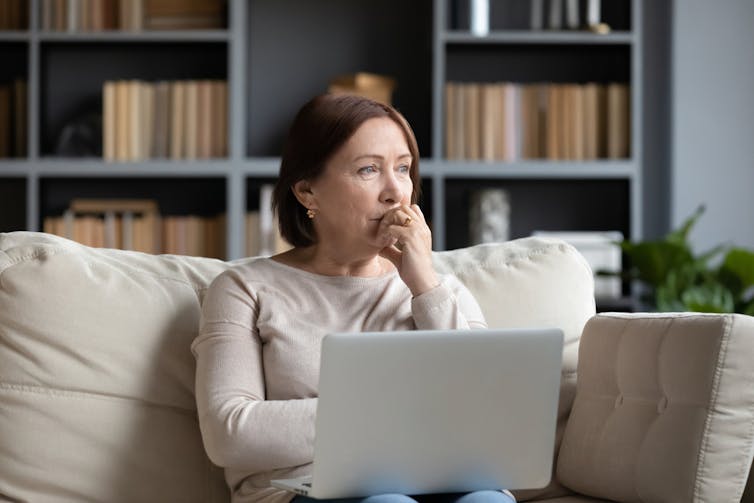Yeh, nah, maybe. When it comes to accepting the COVID vaccine, it's Australia's fence-sitters we should pay attention to
- Written by Katie Attwell, Senior Lecturer, University of Western Australia
As we prepare to roll out COVID-19 vaccines, we need to know where Australians stand. Our recent study shows that as the pandemic progresses, people we surveyed are becoming less certain about whether they’re willing to accept a vaccine.
While overall it seems most people are willing to be vaccinated, the “maybe” or “fence-sitter” group has grown.
We are particularly interested in this group. That’s because researchers know that when it comes to vaccination policy, we should focus on reaching them.
For that, we need to understand why some people are becoming less certain about their intention to vaccinate, and tailor our approach to communicating with them.
Here’s what we found
Our initial survey in May 2020 was part of a larger project aimed at gauging people’s values on a range of topics.
Back then, some 65% of about 1,300 Australians surveyed said they would accept the COVID-19 vaccine, and 27% were uncertain.
When we revisited about half our sample in November, the number of people with a firm intention to vaccinate had dropped to 56% and the number of maybes had risen to 31%.
Read more: Australians' attitudes to vaccination are more complex than a simple 'pro' or 'anti' label
Understanding the attributes of the maybes, and what they think, is essential if we want to address their concerns. To do this, we compared the vaccine maybes to those who would accept or refuse.
Compared with committed vaccinators, the maybes were more likely to be female, to not perceive COVID-19 as a severe infection, were less trusting of science, and were less willing to vaccinate against the flu.
Compared with committed refusers, the maybes were more likely to see the disease as severe and not a hoax, to trust in science, and to vaccinate against the flu.
So attitudes towards disease severity, science, and flu vaccination point to people’s position along a spectrum between COVID-19 vaccine acceptance and refusal.
The relationship works in the way you’d imagine: worrying about COVID-19 infection, trusting science, and accepting flu vaccines orients you to accept — or at least consider accepting — the COVID-19 vaccine.
Women were concerned
Gender is an interesting wild card from our study. A recent poll commissioned by the Commonwealth found women in their 30s are most likely to be hesitant about COVID-19 vaccine safety.
Astute commentary said women who were uncertain might be concerned about the impact of a vaccine on their fertility, or concerned that most medical products are oriented towards male bodies and conditions.
However, our sample skewed towards older Australians. So it may not just be younger women who are more uncertain.
 It may not just be younger women who are more uncertain about vaccination.
from www.shutterstock.com
It may not just be younger women who are more uncertain about vaccination.
from www.shutterstock.com
What are the implications?
We are not overly worried about the drop in firm support for vaccination between May and November.
Two other studies conducted shortly before and after ours (in April and June 2020) found 86% and 75% of Australians intended to accept the vaccine. So while, we report a rise in uncertainty, this is against a backdrop of high rates of vaccine acceptance overall.
The rollout of vaccine programs overseas, and Australia’s own on the brink of being launched, also appear to have also prompted generally high levels of intended acceptance in recent Australian polls. We take heart from this.
Why do different studies about intentions to vaccinate report different results? They are conducted in different population samples, ask different questions, and create different categories about people’s attitudes.
For example, another study conducted in August separated “maybes” into “high” and “low likelihood” of vaccination, finding that 36% of their sample fit into one of these categories. Other studies group the “high likelihood” people with the “yes”, showing how difficult it can be to compare. This also makes it difficult to account for changes over time.
Even though our study registered a change within the same study population, we must interpret this change cautiously.
Many things have been in a state of flux since COVID-19 began, such as our knowledge of the disease, community outbreaks, scary new strains, and state lockdown policies. So people’s attitudes to vaccination will also be informed by this ever-changing scenario. If we polled people today, we might well get different results.
How do we reach the ‘maybes’?
Our follow-up study found about half of those who no longer said “yes” were still saying “maybe” rather than a flat “no”. So reaching these folks will be important.
To do this, policy-makers need to consider the needs of women, especially those of childbearing age. This may help inform strategies to communicate with them, particularly about vaccine safety and the importance of COVID-19 vaccination.
But to truly understand how to reach those on the fence, we need to conduct in-depth interviews to unpack their beliefs and what factors might motivate them to vaccinate. Our Coronavax project is doing this in Western Australia.
In the meantime, we recommend empathetic communications with and about those who are hesitant. People who have ongoing reservations about vaccinating against COVID-19 are not “anti-vaxxers” and shouldn’t be branded as such.
It is the job of governments, technical experts, health professionals and researchers to provide COVID-19 vaccine “fence-sitters” with the confidence and motivation to vaccinate.
Read more: A short history of vaccine objection, vaccine cults and conspiracy theories
Authors: Katie Attwell, Senior Lecturer, University of Western Australia



